Nairobi is a vibrant, multicultural metropolis, creative city that is both traditional and edgy at the same time rich in culture and a lively nightlife. There are so many places to visit in Nairobi from its heritage and traditional markets, to spectacular waterfalls and stunning national parks.
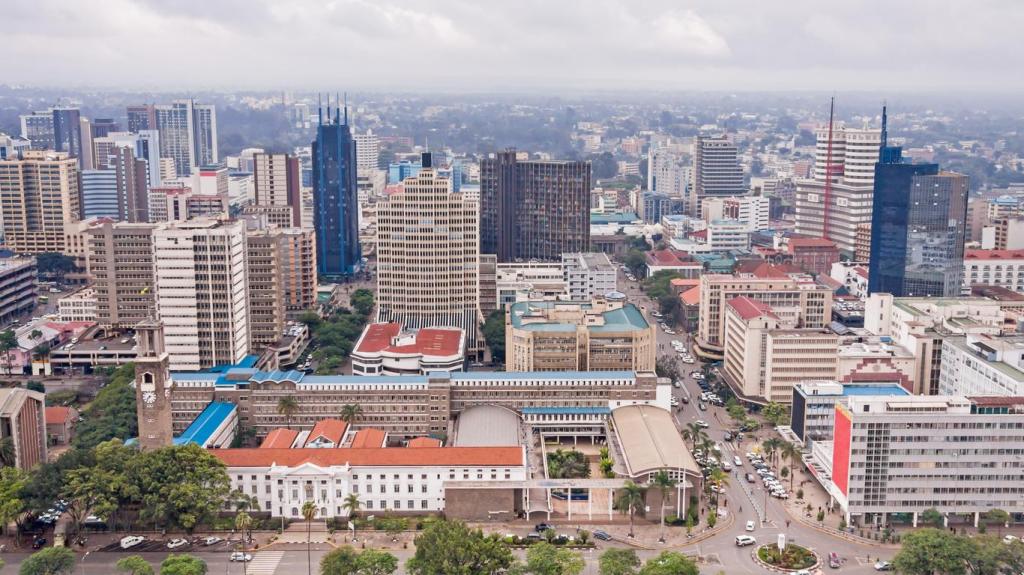
Healthcare
Most visitors in Kenya can trust most private hospitals in Nairobi. These private facilities have highly qualified medical staff and the latest medical equipment, so they can easily diagnose and treat a patient. Their charges are much higher than those in public hospitals, but tourists will find even that amount to be surprisingly affordable. Tourists are not bound to purchase a private health insurance plan, but they are strongly recommended to do so. Visitors in Kenya should check the medical network that is offered by their global health insurance provider to see which facilities can provide direct reimbursement. There are quite a few hospitals that serve expatriates quite well in Kenya
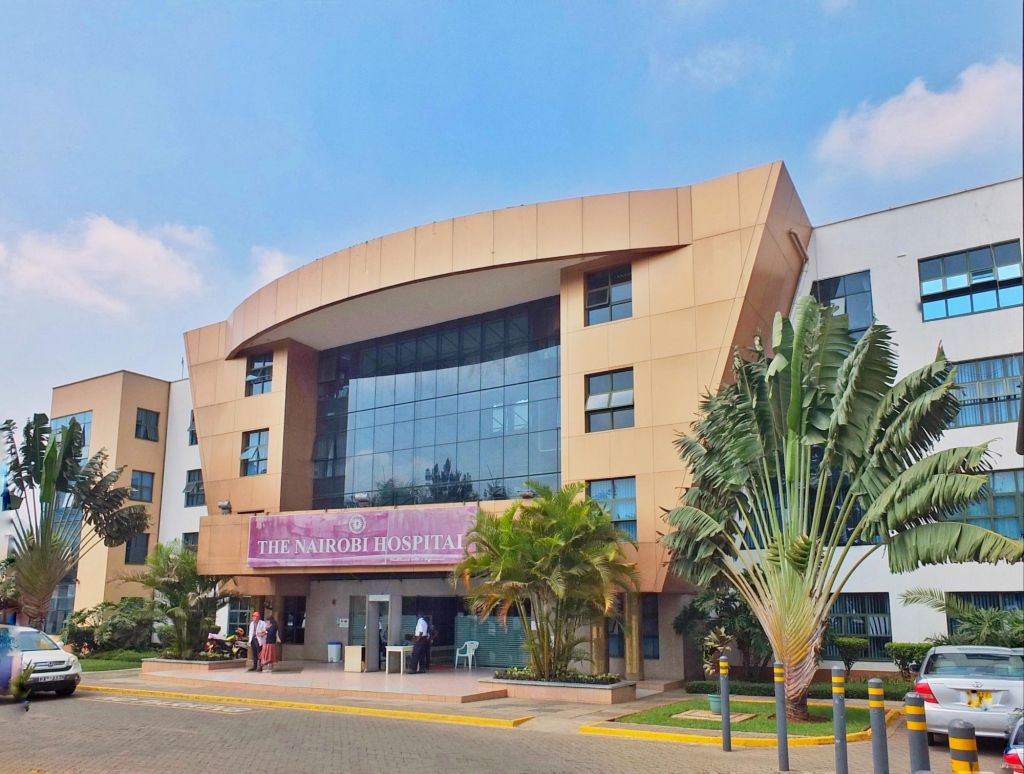
Transportation
Jomo Kenyatta International (NBO) is the largest airport in Kenya and is based in Nairobi. You can fly to 58 destinations with 31 airlines in scheduled passenger traffic. For intercity coaches to Mombasa, Kisumu, Nakuru, Voi, etc and cross border coaches to Uganda, Tanzania, Rwanda, South Sudan and Ethiopia you board them at River road within the city centre. For local suburban shared taxis they Available across different terminals depending with where you going for private rides they is uber, bolt, etc
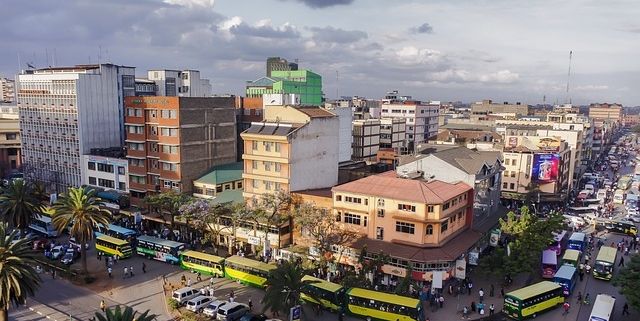
Shopping
The Maasai Market is a vibrant open-air market where visitors can shop for authentic African crafts, jewellery, and souvenirs. There are multiple locations around Nairobi, and visiting during the day is recommended for the best shopping experience. For western shopping style Nairobi is home to numerous mall i.e River side, Thika road mall, the junction, the hub karen, yaya centre, the Village, etc
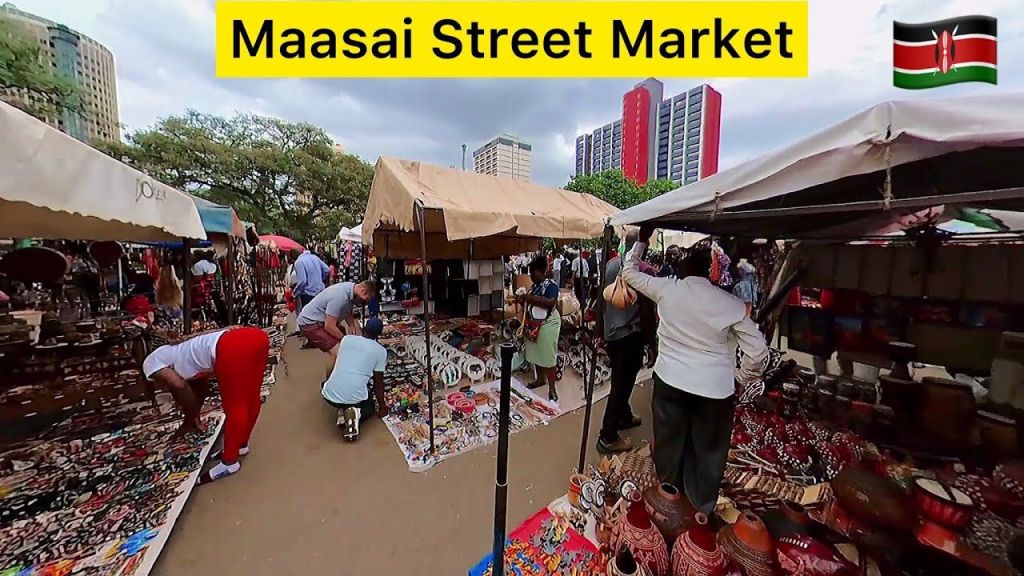
What to eat
When in Nairobi you must try the staple dish of ugali, a maize porridge that is often eaten with nyama choma (barbequed meat), kachumbari (tomato, onion, and chilli salad), and collard greens. The meal is eaten with your right hand and the ugali is rolled into a ball to scoop up the rest. Kenyans also love a cup of milky masala tea. I would highly recommend that you taste “Pilau” is a special rice cooked with a variety of spices and with either beef or chicken. Most Nairobians will prepare it for visitors or on special occasions. It can be accompanied by “Kachumbari”.
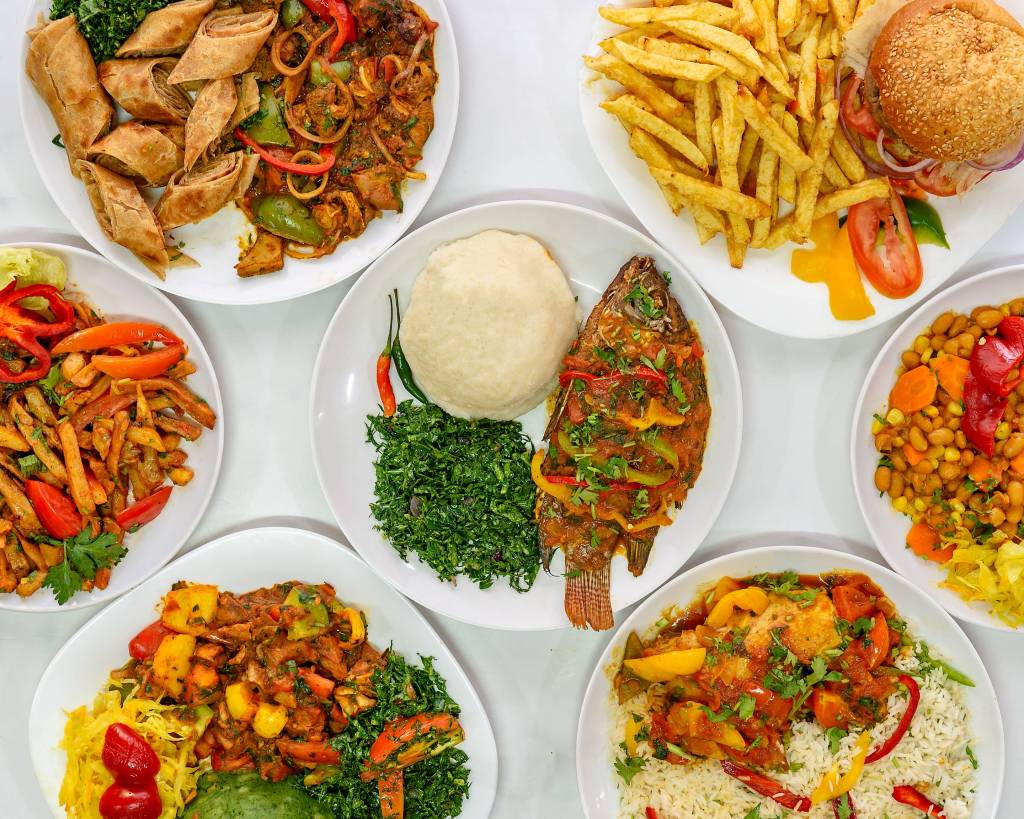
Attractions in Nairobi:
If you want to embark on a unique wildlife experience, then Nairobi is the place for you. Here you’ll find some of the world’s most vulnerable species, including elephants, black rhinoceroses, giraffes, cheetahs, leopards, lions and buffaloes, not far from the city centre. Be sure to take a safari tour during your visit to see these creatures in their natural habitat.
Elephant Orphanage or David Sheldrick Wildlife Trust is a rescue and rehabilitation centre for elephants in Nairobi National Park off Magadi Road. It houses orphaned baby elephants due to poaching, drought or other human-wildlife conflicts. You can watch them be fed and cleaned in a mud bath. Photography is allowed, and there is a small gift shop to buy souvenirs. The baby elephants are kept in a nursery for the first 2-3 years when they are milk-dependent and then transferred to the Reintegration Centre in Tsavo East National Park, where they are released into the wild. The elephants are also up for adoption, and potential adopters can book an evening appointment with the management. Recently, the project has expanded to include shelter operations for rhinos and giraffes. The only time to see the elephants is from 11:00 AM to 12:00 PM, when the keepers bring the elephants to a cordoned area to play, feed, and show the public how well they are doing.
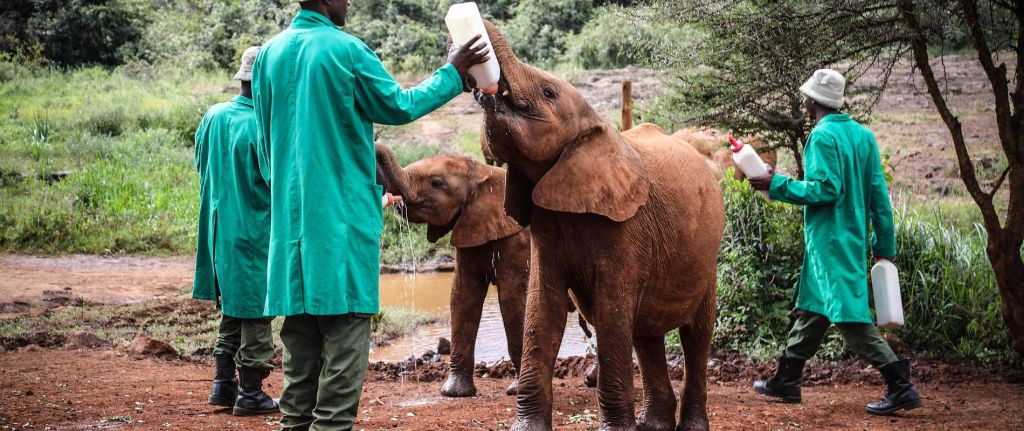
Built in 1971, the world famous Nairobi Railway Museum is a spectacular landmark promising to protect and showcase the precious antique records of the railways of East Africa. The museum has many galleries displaying the age old collections of local trains. The vast collection is housed in an old building near the railway station of the city. All the major relics of the Eastern African Railway has been well recorded here. There are small and large simulations of trains, tracks, and even ships, which educates the travellers about how the railways originated and developed to be what it is today. . Visitors come in millions all round the year to witness this intriguing prologue of the colonial history.
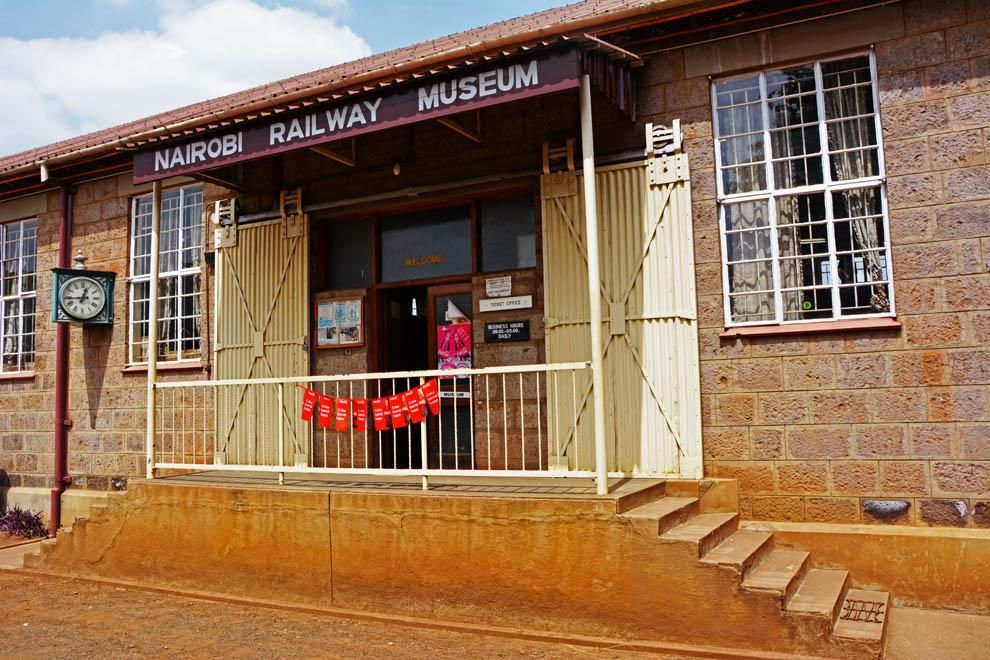
The world class Kenyatta International Conference Centre is best known for holding official gatherings, meetings and conferences. Magnificently tall and giving amazing views from its balconies and terrace, the building is one of the most prominent landmarks in the city. The brilliant edifice displays the wonderful mix of olden and modern African architecture. Standing over City Square on City Hall Way, the building has a distinct viewing stage, specifically made for the tourists to offer the most fantastic views of the city. The rooftop of one of the tallest structures in the capital gives a full 360 degree coverage of Nairobi from where you can even spot the high Mt. Kenya.
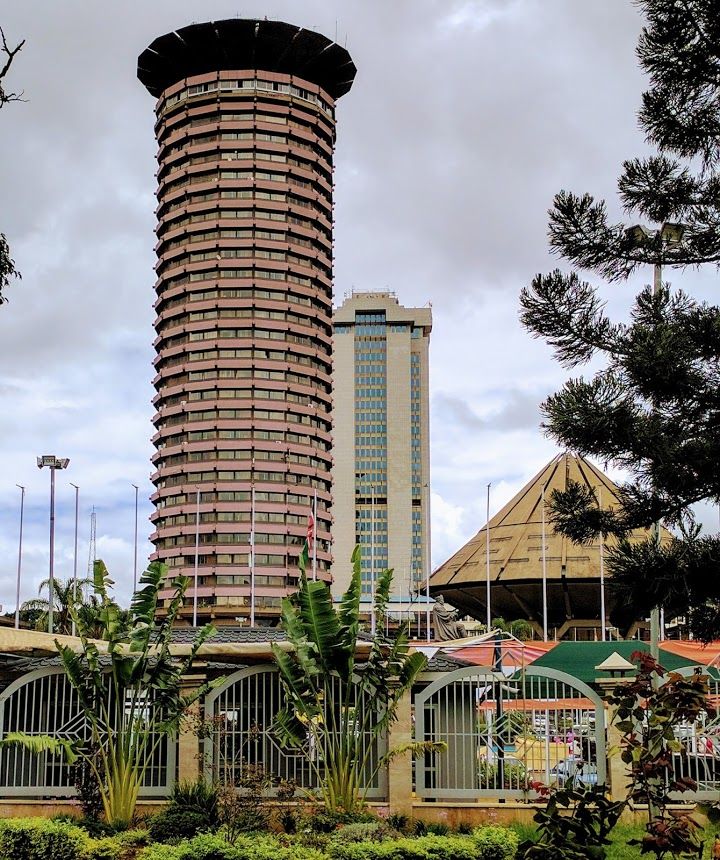
National Archives was established in an old building. Showcasing the rich Kenyan tribal social culture and also the history, art works and information on politics of the country. The collection of artefacts and paintings, that dominates the majority of the building is truly inspiring and attracts several visitors from different nations. Right in the bustling heart of the city is the unique National Archives, also referred to as ‘ The Memory of the nation’. Home to the countless collections of artefacts, antiquities, records and history of the city and the country, the museum is best visited by the local and foreign students, researchers, explorers and analysts. The tourists often appreciate the art exhibitions which put on a show of vast collections of the local art masterpieces, ancient photographs of the city, traditional antiquities, furniture and articles
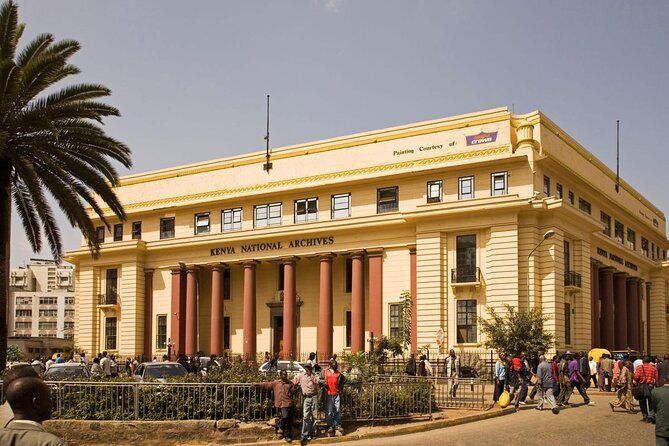
Uhuru Gardens is Kenya’s largest urban commemorative and memorial park, located along Langata Road, Nairobi. It was established to celebrate the country’s independence from the British Empire in 1963 and was declared a National Monument in 1966. It houses three historically significant monuments that draw the attention of tourists. The lush green gardens are within a 15-minutes driving distance of the city centre. A Mũgumo tree stands erect at the place where the first Kenyan flag was hoisted post-independence. It is also significant to the ethnic native community of central Kenya, the Kikuyu people. A commemorative monument standing tall at 24m with clasped hands and a dove sculpture signify Kenya’s freedom. Beside the memorial is a statue with soldiers raising the Kenyan flag. A fountain in the garden honours 25 years of independence. An identification card is usually required at the time of entry

African Heritage House is situated in front of the Nairobi National Park in Mlolongo. Within the house are artefacts, artworks, jewellery, textiles, traditional pottery, weapons, antiques, ceremonial clothes and more. It is open for tours, lunches or dinners and overnight stays. The building’s structure was inspired mainly by Mali’s Great Mosque of Djenne and Morocco’s mud palaces. It was built in the late 1900s by Alan Donovan to preserve African architectural designs that have been forgotten. The rooms mainly represent different African regions, including Morocco, the East African coast, Ghana, Burkina Faso, Lamu etc. Authentic African food like Swahili coconut rice and Ghana’s groundnut stew is served here. A pool house on the premises contains sculptures by various African artists. The establishment is surrounded by greenery, and numerous birds and animals like ostriches, gazelles, giraffes etc. can be seen around.
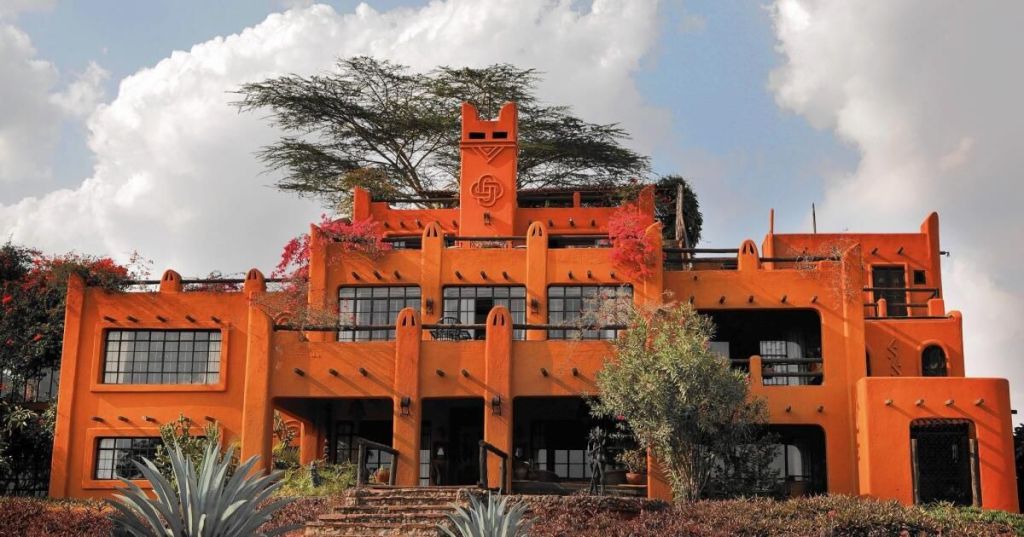
Karen Blixen’s House & Museum If you loved Out of Africa, you’ll love this museum in the farmhouse where author Karen Blixen lived between 1914 and 1931. She left after a series of personal tragedies, but the lovely colonial house has been preserved as a museum. Set in expansive gardens, the museum is an interesting place to wander around, but the movie was actually shot at a nearby location, so don’t be surprised if things don’t look entirely as you expect!The museum is about 2km from Langata Rd. The easiest way to get here by public transport is by matatu 24 via Kenyatta Ave, which passes right by the entrance
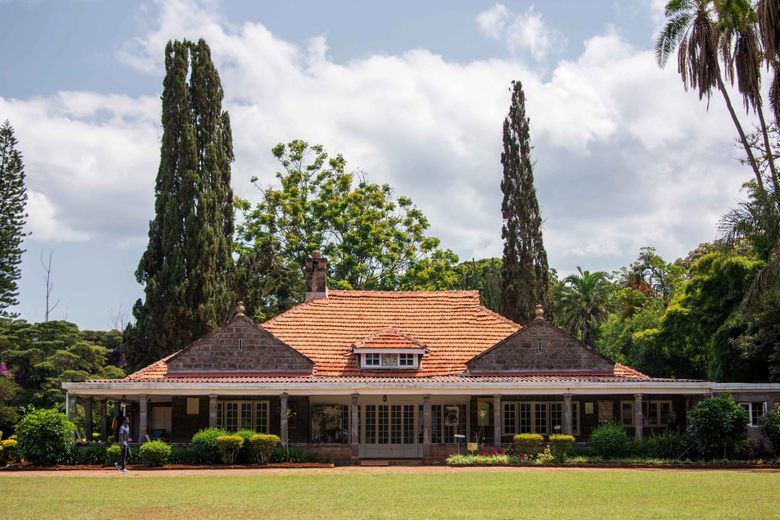
1 Comment